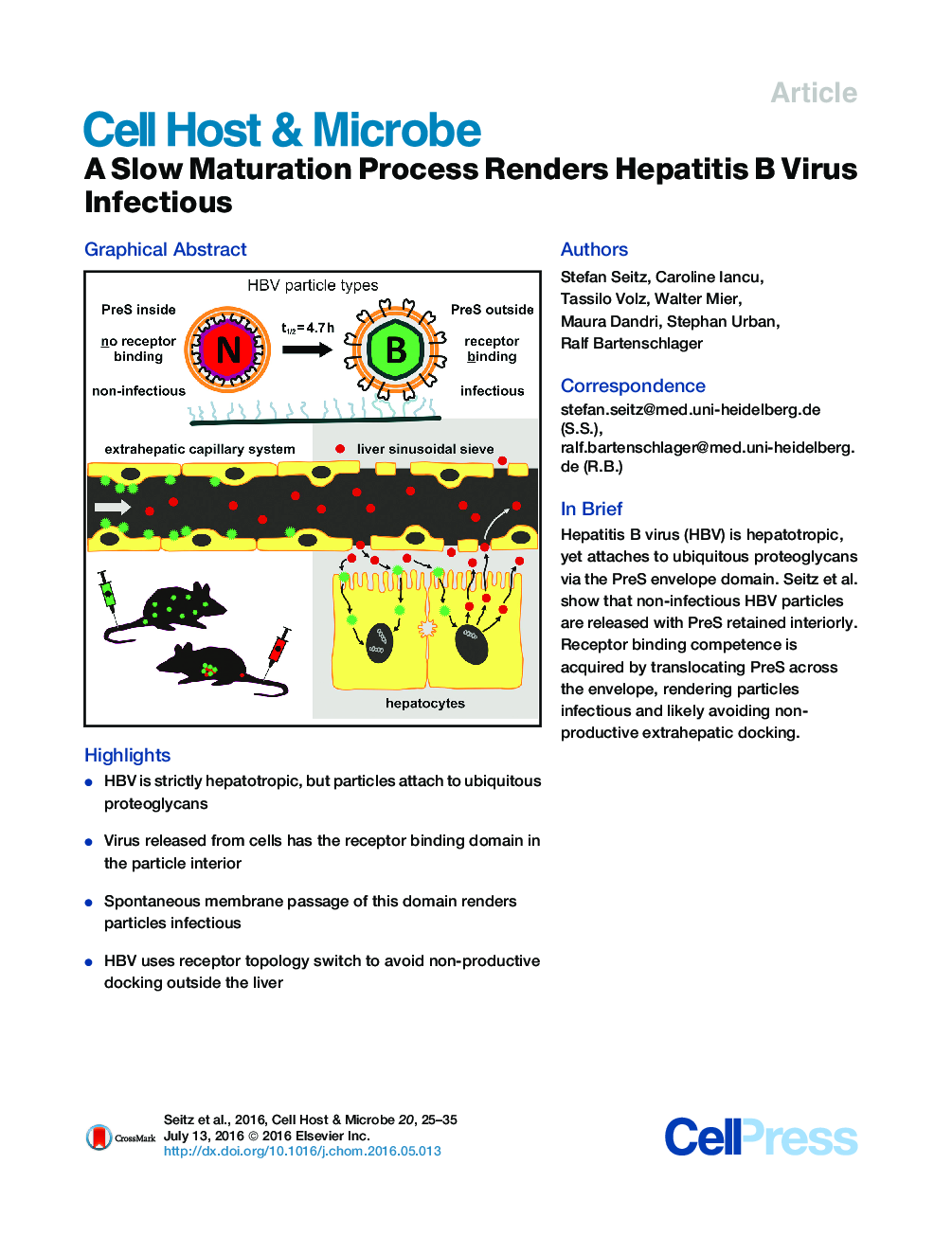| Article ID | Journal | Published Year | Pages | File Type |
|---|---|---|---|---|
| 4360810 | Cell Host & Microbe | 2016 | 11 Pages |
•HBV is strictly hepatotropic, but particles attach to ubiquitous proteoglycans•Virus released from cells has the receptor binding domain in the particle interior•Spontaneous membrane passage of this domain renders particles infectious•HBV uses receptor topology switch to avoid non-productive docking outside the liver
SummaryHepatitis B virus (HBV) replication is strictly limited to the liver. Virions attach to hepatocytes through interactions of the viral PreS envelope protein domain with heparan sulfate proteoglycans (HSPGs). However, HSPG is ubiquitously present on many cell types, suggesting that HBV employs mechanisms to avoid attachment at extrahepatic sites. We demonstrate that HBV particles are released from cells in an inactive form with PreS hidden in the interior. These HSPG-non-binding (N-type) particles develop receptor binding competence by translocating PreS across the envelope onto their surface. Conversion into HSPG-binding (B-type) particles occurs spontaneously and renders HBV infectious. Low-dose inoculation of mice with human liver xenografts demonstrates superiority of N-type particles in establishing infections, while mature B-type virions, generated via N-type conversion, are profoundly impaired, correlating with non-selective accumulation in extrahepatic tissues. This dynamic topology switch represents a maturation process utilized by HBV to most likely avoid non-productive docking outside the liver.
Graphical AbstractFigure optionsDownload full-size imageDownload high-quality image (271 K)Download as PowerPoint slide
